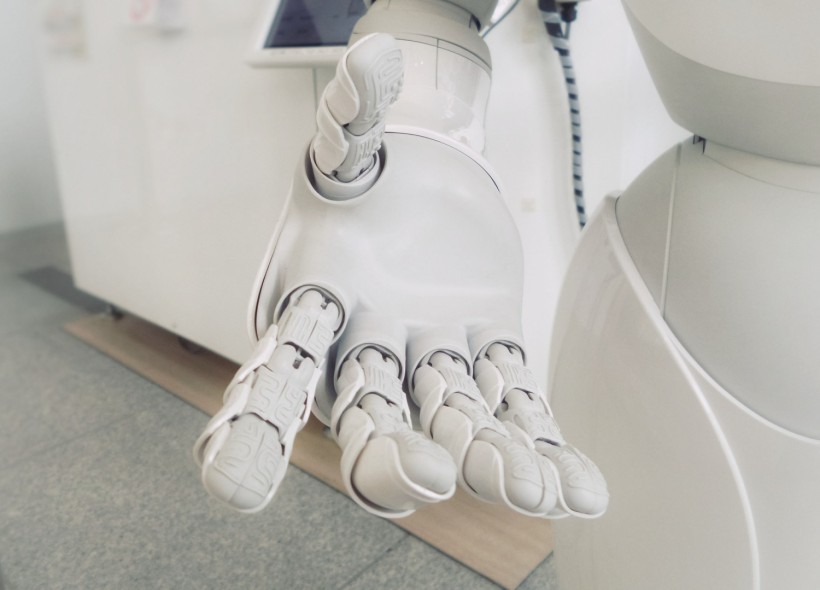Grippers are the tools needed by a robot to interact with objects. A gripper gives your robot hand-like abilities. Essentially, typical robot grippers compose of levers that fit together when the robot closes its grasp.
Robot grippers perform different functions depending on their use and what you want your robot to do. They are mechanical devices for holding objects of varying shapes and sizes. The gripping arms come in a variety of forms, from fingers and pincers to suction cups. Notably, the robot gripper must be able to manipulate its environment without causing damage or harm to any person or property that may get in its way.
Features of Robot Grippers
Grippers come in large or small designs that accommodate different types of grips and perform various tasks. For example, they can pick up heavy loads or small and fragile objects. Some have a single finger, some have all four fingers, and others have grippers with multiple joints that perform many different motions.
Grippers allow the user to move it in one or a few degrees of freedom (DOF), and then it will grip and do its intended task. Other more sophisticated designs require the user to tell the robot how forcefully it must grip, where to grip, and which direction it should turn. These more complicated designs tend to require more sensors than simpler ones.
Another essential feature of a gripper is its robustness, evidenced by its ability to resist getting punctured or bent out of shape. Such resistance is vital in assembly lines where the arm constantly handles and pushes components into place.
There are three main axes of motion on robot grippers: X (side-to-side), Y (up or down), and Z (forward or backward). Other axes are possible but less common, such as the gripper using a spherical ball at the end to grip an object or a device that uses suction or vacuum to grip items. If your application requires that you can move the arm anywhere in space, it means the arm will have six degrees of freedom, i.e., three rotational axes and three translational axes.
Some robot arms are suitable for controlling grippers on end effectors, while others come with a series of adapters and brackets. Unfortunately, you can only use grippers for a specific use, and it can be expensive to get outside of their intended purpose.
The Roles of Robot Grippers
Robot grippers are responsible for holding available workpieces for robotic applications. They hold, manipulate, and orient components until they are ready to be processed with other tools on a production line. Once a part has moved into place, the robot gripper must release its hold and allow the robot to perform another task.
Robots work better with sensors, such as vision systems, which can guide them or detect when they've reached their target. This type of information is vital for navigation and manipulation tasks. In addition, robots move Parts through the assembly process to ensure they're processed correctly and efficiently.
Types and Applications of a Robot Gripper
End of Arm Tooling or End Effectors
The end effector is the part on the end of the robot arm that picks things up, turns screws, pushes buttons, and more. The arm is typically a gripping device or clamping mechanism with sensors for depth or force sensing, as well as vision-based sensor capabilities. Typical materials include metal, plastic, rubber, and composite plastics.
Hand
The hand is a more generalized term encompassing the entire gripping device at the end of a robot arm. It implies any robot gripper, including end of arm tooling or end effectors.
Arms
The arm refers to a structure that joins the end effectors to its control system. It includes anything else in between, such as linkages or rigging. You can think of arms as the skeletal structure of a robot arm.
Sensors
The most crucial sensor in any robot arm is its touch sensor. The sensors detect when the robot has come in contact with something, whether it moved too fast/slowed down too much so that it might have stubbed its toe, etc. Depending on what you want your robot arm to do, you can get different kinds of sensors for this purpose. For example, you can use a big soft plastic bumper from the hardware store, which is great for being gentle around furniture and people. Or you can go with infrared or laser distance sensors that measure the time it takes for a beam to travel from one point to another.
Common Gripper Styles
Parallel Jaw
The parallel jaw is usually mounted on a robotic arm, allowing it to grasp various shapes and sizes of objects. A typical design uses opposing serrated pincer-like fingers that pinch an object between the jaws. Parallel jaw grippers are helpful in applications involving larger objects, such as car assembly lines for holding body panels during installation.
Cylindrical Grippers
Some industrial robots use cylindrical jaws to handle round objects. Cylindrical grippers are usually mounted on the arm alongside parallel jaws, allowing the robot to easily switch between gripping different shaped components or tools without having to change them out physically. For example, the everyday use of cylindrical grippers is to hold car tires on assembly lines.
Cylindrical grippers grip large pieces of sheet metal. Cylindrical jaws are made of steel, aluminum, or plastic components, depending on the application they're needed.
Forked Grippers
Forked grippers are similar to cylindrical jaws in that they handle round objects and flat components. However, forked grippers' primary function is to grip round objects such as pipes or rods by using two opposing fingers that come together at a sharp angle.
Final Submission
Robot grip systems are crucial when designing industrial robots. They ensure safety, compliance with regulations, and the ability to process products efficiently. You can also use grippers in collaborative applications that require human interaction with the robot.
Robot grippers, specifically those that involve human interaction, must ensure safety and prevent harmful robot motion to avoid injury or damage to any person or object. Grippers and their respective systems should also adapt to their environment to safely allow human manipulation of the robot.
© 2024 NatureWorldNews.com All rights reserved. Do not reproduce without permission.
* This is a contributed article and this content does not necessarily represent the views of natureworldnews.com



![Plastic Pollution: Scientists Include Spores of Plastic-Eating Bacteria ‘Bacillus Subtilis’ to Develop 'Self-Digesting Plastic' [Study]](https://1471793142.rsc.cdn77.org/data/thumbs/full/70396/280/157/50/40/plastic-pollution-scientists-include-spores-of-plastic-eating-bacteria-bacillus-subtilis-to-develop-self-digesting-plastic-study.jpg)

![Venomous Centipede Could be Game-Changer and Save Lives of People with Kidney Disease [Study]](https://1471793142.rsc.cdn77.org/data/thumbs/full/70407/280/157/50/40/venomous-centipede-could-be-game-changer-and-save-lives-of-people-with-kidney-disease-study.jpg)
